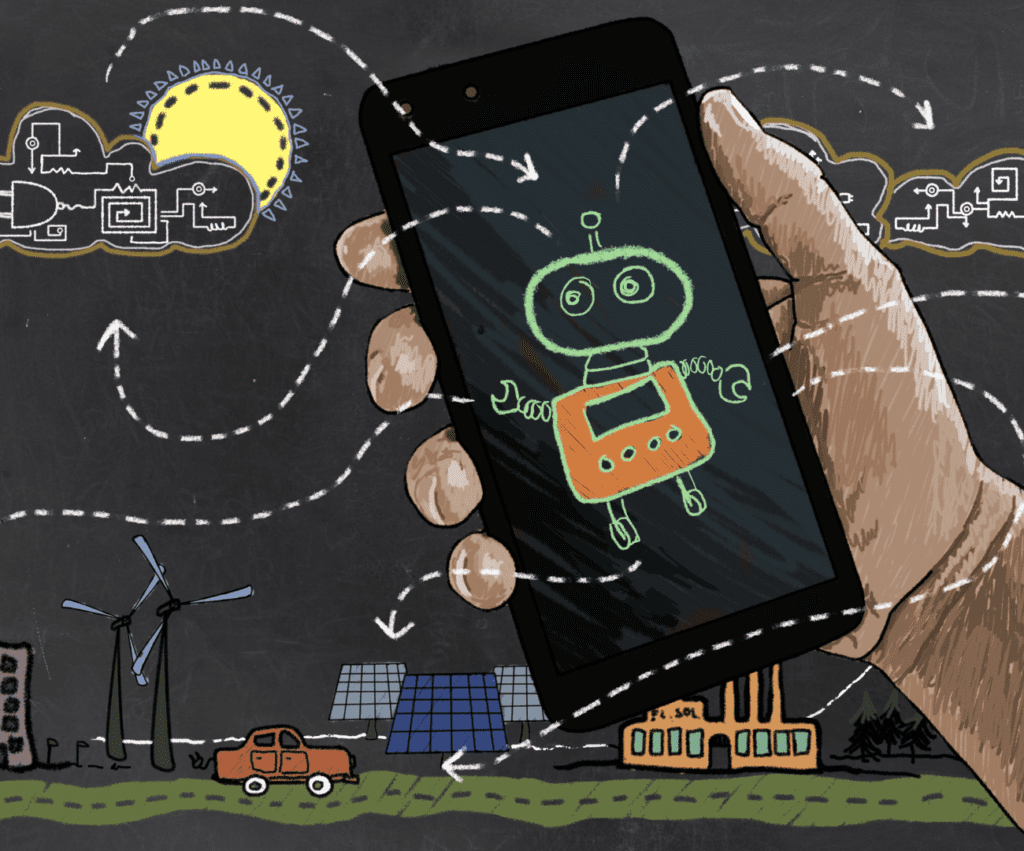Whether it’s automated lead nurturing strategies, or something conventional from conversions points of view, there’ll be a point where you need to create a resonance effect for your customers.
It’s a phenomenon where the marketing funnel automatically pushes the prospects to the next stage until they have converted. From then on, it’s all about customer retaining and offering them value-added services for repeat business opportunities.
We wrote this post for startup owners and small businesses who are relatively new to lead nurturing in digital marketing. Since a lot of new businesses struggle to convert leads – let alone get them in the first place, it’s essential to highlight different aspects of automated lead nurturing strategies – and that too, with the help of relevant lead nurturing examples.
Let’s get started.
What Are The Basics of Automated Lead Nurturing Strategies?

As a small business owner, understanding automated lead nurturing strategies can significantly benefit your business by increasing customer engagement, improving conversion rates, and driving sales.
On the other hand, if we were to go back to the basics, definition-wise, lead nurturing refers to the process of building relationships with potential customers and guiding them through the sales funnel until they are ready to make a purchase.
Automated lead nurturing involves using technology and software to streamline and automate this process, saving you time and effort while still delivering personalized and targeted messaging to your leads. Here are some key points to know about automated lead nurturing strategies and their basics:
The Concept of Automated Lead Nurturing:
Automated lead nurturing is the use of automated systems, such as email marketing platforms or customer relationship management (CRM) software, to deliver relevant and timely content to potential customers at various stages of the buying journey.
It aims to build trust, educate, and engage leads to move them closer to making a purchase. It is crucial because many leads require multiple touchpoints before converting and automating the nurturing process ensures consistency, scalability, and efficiency.
Lead Segmentation:
Effective lead nurturing starts with segmenting your leads into distinct groups based on their demographics, interests, behaviors, or where they are in the sales funnel. This allows you to create tailored content and messaging that resonates with each group, increasing the chances of conversion.
Segmentation can be done using data collected through lead capture forms, website analytics, or customer surveys.
Personalization:
Personalization is a key aspect of successful lead nurturing.
By leveraging the data you have on your leads, such as their name, previous interactions, or preferences, you can customize your communication to address their specific needs and pain points.
Automated systems enable you to dynamically insert personalized information into your emails or messages, creating a more individualized experience for your leads.
Lead Scoring:
Lead scoring involves assigning a value to each lead based on their level of engagement and likelihood of converting. It helps prioritize your efforts and focus on leads that are most likely to become customers.
Leads with higher scores can be targeted with more personalized and sales-oriented content, while leads with lower scores can receive more educational or awareness-building content.
Email Automation:
Email automation is a common method used in lead nurturing. With email marketing platforms, you can create a series of pre-designed emails triggered by specific actions or time intervals.
These emails can deliver relevant content, educational materials, product information, or exclusive offers to nurture your leads and guide them towards a purchase decision. Automated emails can also be used to re-engage leads that have gone dormant or abandoned their shopping carts.
Multichannel Nurturing:
While email is a popular channel for lead nurturing, it’s essential to consider other communication channels as well.
Social media platforms, SMS marketing, website personalization, and chatbots can be integrated into your automated lead-nurturing strategy to reach leads through their preferred channels. By diversifying your approach, you can increase engagement and build stronger relationships with your leads.
Continuous Optimization:
Automated nurturing is an iterative process that requires ongoing monitoring, analysis, and optimization.
Pay attention to key performance indicators (KPIs) such as open rates, click-through rates, conversion rates, and revenue generated.
Analyze the data to identify bottlenecks or areas for improvement and make necessary adjustments to your content, segmentation, or automation workflows.
10 Automated Lead Nurturing Strategies With Relevant Lead Nurturing Examples

While it’s relatively straightforward to create a lead nurturing strategy, developing an effective one requires implementing specific best practices.
To help you establish meaningful connections with your leads, we’ve compiled a list of the top 10 lead nurturing tactics that can enhance your approach:
- Welcome Drip Campaign:
Use Case: When a lead subscribes to your newsletter or downloads a free resource, you can set up an automated welcome email series to introduce your brand, provide valuable information, and encourage further engagement.
- Educational Email Series:
Use Case: For leads who have shown interest in a particular topic or product, create a series of automated emails that educate them on the subject matter, address their pain points, and position your business as a trusted authority.
- Abandoned Cart Recovery:
Use Case: When a lead adds items to their cart but doesn’t complete the purchase, automatically send them a series of reminder emails highlighting the items, offering incentives like discounts or free shipping, and encouraging them to return and complete the purchase.
- Re-Engagement Campaign:
Use Case: Target leads who have been inactive or haven’t engaged with your brand for a certain period. Send them personalized emails or offers to reignite their interest, provide updates on new products or features, or offer exclusive promotions to encourage them to re-engage with your business.
- Upsell/Cross-sell Campaign:
Use Case: Identify leads who have made a previous purchase and automate a series of emails that suggest complementary or upgraded products, highlight customer testimonials, and offer incentives to encourage additional purchases.
- Event/Webinar Nurturing:
Use Case: If you’re hosting an event or webinar, create an automated email campaign to nurture registrants before the event, providing event details, agenda, and reminders. After the event, follow up with recorded content, additional resources, and relevant offers.
- Customer Onboarding Series:
Use Case: Once a lead converts into a customer, automate a series of emails to guide them through the onboarding process. Provide tutorials, setup instructions, best practices, and personalized support to ensure they have a smooth experience and maximize their product/service usage.
- Post-Purchase Follow-up:
Use Case: Send automated emails to customers after they’ve purchased to thank them for their business, request feedback or reviews, provide additional resources or usage tips, and offer exclusive discounts for future purchases.
- Lead Scoring and Sales Handoff:
Use Case: Implement a lead scoring system to identify leads that have reached a certain threshold of an engagement or are displaying strong buying signals. Automatically notify your sales team when a lead becomes “sales-ready” to initiate personalized follow-up and close the deal.
- Loyalty and Customer Retention Campaign:
Use Case: Automate a series of emails to reward and retain existing customers. Offer loyalty rewards, exclusive discounts, referral incentives, and personalized recommendations based on their purchase history to encourage repeat business and foster long-term customer loyalty.
That being said, any number of lead nurturing examples that you take from the aforementioned strategies will never work, or partially work, if you aren’t doing it with due diligence.
That question is: what does due diligence imply in the context of being thorough with whether it’s automated or manual lead nurturing?
Here’s what you can do at your end:
Define Clear Goals:
Clearly outline your objectives and what you aim to achieve through your lead nurturing efforts. This clarity will guide your strategy and help you measure success.
Segment Your Leads:
Divide your leads into distinct groups based on shared characteristics or behaviors. This allows you to deliver tailored messages that resonate with each segment.
Personalize Communication:
Leverage available data to personalize your interactions. Address leads by their names, acknowledge their previous engagements and provide content that aligns with their specific needs.
Provide Valuable Content:
Deliver relevant and valuable content to your leads at different stages of the buyer’s journey. Educate and engage them by offering insights, industry trends, and solutions to their challenges.
Use Multi-Channel Approach:
Utilize various communication channels, such as email, social media, and webinars, to reach your leads effectively. This approach ensures you connect with them through their preferred channels.
Automate Email Campaigns:
Implement automated email workflows to send targeted messages based on specific triggers or time intervals. This allows for consistent and timely communication with your leads.
Nurture Abandoned Carts:
Create automated campaigns to re-engage leads who have abandoned their shopping carts. Offer incentives, address concerns, and guide them towards completing their purchases.
Score Your Leads:
Develop a lead scoring system to prioritize and focus your efforts on leads displaying higher levels of engagement and purchasing intent. This enables you to allocate resources effectively.
Align Sales and Marketing:
Foster collaboration between your sales and marketing teams to ensure seamless lead handoff. Define clear criteria for passing leads from marketing to sales and establish effective communication channels.
Continuously Test and Optimize:
Regularly analyze and refine your lead nurturing strategy. Track key metrics, experiment with different approaches, and make data-driven adjustments to improve your results.
Conclusion:

While automation is certainly on the rise, the approach to lead nurturing will also change with the passage of time. That’s one of technology’s biggest advantages, and disadvantages – given that in the latter case, you’re stagnant and not willing to innovate by sticking to the old ways.
We recommend falling back on metrics whenever any of the best lead nurturing strategies are applied to a business. Carefully identify the loopholes and areas that could use improvement after referring to conversions analytics, and then divert your resources to that aspect of the project to maximize conversions.


